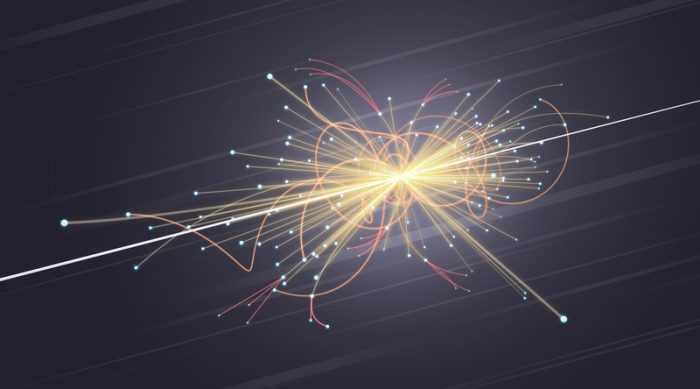Yesterday, September 10, was the tenth anniversary of the Large Hadron Collider (LHC). If the name doesn't ring a bell immediately, that's not all that surprising. Yes, this machine is a giant loop that is 27 km (16.5 miles) long. But it's mostly hidden underground at the French-Swiss border. And its findings are so complex that they are only understood by the most brilliant physicists on the planet.
So why are we interested in celebrating its birthday? Because ultimately the LHC is on a quest to understand the things that make up the universe on the tiniest level possible: the quantum level. These particles and forces are so small and mysterious, that they usually resist our efforts to inspect them. (Unless you're Ant-Man ...)
The Large Hadron Collider is a machine that breaks this resistance down. You could even say that it smashes it.
Crash, smash, bash!
Protons go zooming down tubes like this for miles. Super powerful magnets inside keep them in place every inch of the way. (Getty Embed)
The LHC is what's known as a particle accelerator. It does one thing super well—it smashes protons together at incredible speeds. (Quick reminder: protons are one of the two types of particles that make up the nucleus, or centre, of an atom. The other is a neutron.)
To get this smashy-smashy going, the LHC sends protons around and around its loop at speeds just barely under the speed of light. Then it makes the protons collide over and over. Why? Because when you smash things together, they usually break into smaller pieces. And then you can inspect those smaller pieces to see how they make up the whole. Cool!
Watch this video from Discovery for a tour of how the LHC works ...
We know you're in there!
This is ATLAS, one of the massive devices used to inspect these tiny collisions. (Getty Embed)
So how do the proton collisions inside the Large Hadron Collider help physicists solve their problems? That's a very good question. Let's try to imagine it like this ...
Take gravity. It's everywhere, and scientists can accurately predict the gravity of nearly any object in space. But they still don't know exactly what causes it to be. Before the LHC, when physicists tried to examine how a force such as gravity works, their calculations told them that there were unknown particles involved. They couldn't see these particles themselves—they just knew that without something like them, the calculations couldn't work.
In a way, it was like being able to see only the footprints of undiscovered particles. Something made those tracks! But those footprints led inside a building that they didn't have a key to. So, the LHC is the device that shakes and breaks apart that building until those suspected particles come tumbling out of hiding.
The quest continues
Just some of the computers used to analyze the incredible amounts of data at the LHC. Thousands of scientists work there, too! (Getty Embed)
Which they did! Its most famous discovery so far was made in 2012 when scientists found a particle called the Higgs boson. This little character had been first talked about in the 1960s. It just took around fifty years for us to have the technology to prove that they were right!
Hey, this stuff is all extremely challenging to anyone to understand. But bottom line? For ten years, the Large Hadron Collider has given scientists a chance to look closer than ever before at the tiniest particles in existence. Things hidden from view.
And it's just getting started...
 An illustration of what the Large Hadron Collider does all day. What is it exactly? Read on ... (© Generalfmv - Dreamstime.com)
An illustration of what the Large Hadron Collider does all day. What is it exactly? Read on ... (© Generalfmv - Dreamstime.com)









